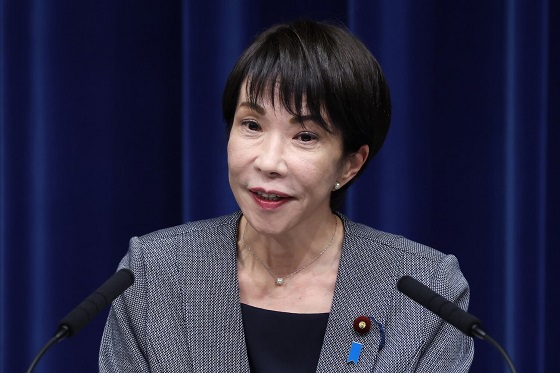Business
America’s Largest And Most Expensive DEI Program Is About To Go Up In Flames

The flag of the University of Michigan
 From the Daily Caller News Foundation
From the Daily Caller News Foundation
By Jaryn Crouson
The University of Michigan’s (UM) multi-million dollar diversity, equity and inclusion (DEI) program may soon be dismantled.
The university’s board of regents has reportedly asked UM president Santa Ono “to defund or restructure” the DEI office amid growing criticism and public pressure, according to emails shared on X. The board is expected to vote on the matter on Dec. 5.
“I write to share information with you about impending threats to the University of Michigan’s DEI programming and core values of diversity, equity, and inclusion,” Rebekah Modrak, faculty senate chair, wrote in an email to faculty senate members. “It has been confirmed by multiple sources that the Regents met earlier this month in a private meeting with a small subgroup of central leadership members, and among the topics discussed was the future of DEI at UM, including the possibility of defunding DEI in the next fiscal year.”
Calls for the university’s DEI program to come to a close surfaced after The New York Times exposed its failures and the vast amount of money being thrown at it.
“In recent years, as D.E.I. programs came under withering attack, Michigan has only doubled down on D.E.I., holding itself out as a model for other schools,” the NYT wrote in an October article. “By one estimate, the university has built the largest D.E.I. bureaucracy of any big public university. But an examination by The Times found that Michigan’s expansive — and expensive — D.E.I. program has struggled to achieve its central goals even as it set off a cascade of unintended consequences.”
Despite UM investing $250 million into DEI since 2016, students and faculty have reported a deteriorating campus climate since the program began and are less likely to interact with people of a different race, religion or political ideology, though these are “the exact kind of engagement[s] D.E.I. programs, in theory, are meant to foster,” the article stated. Attempts to create a more diverse campus also fell flat, with black enrollment at the university remaining a steady 5%.
The program also created a “culture of grievance,” with the office’s conception coinciding with an “explosion” of complaints on campus involving race, gender and religion, the NYT reported. Meanwhile, nearly 250 university employees were engaged in some form of DEI efforts on campus.
Modrak in her email referenced the article, calling it a “tendentious attack” that was “not well researched,” and claiming that the author “cherry-picked” examples of UM’s failures.
DEI staff cost the university approximately $30.68 million annually, with the average salary reaching $96,400, according to Mark Perry, an American Enterprise Institute scholar. Several DEI employees are paid more than $200,000 a year, while the department’s head makes upwards of $400,000.
“I think that across the ideological spectrum both regular citizens and policymakers have really shifted on issues of identity politics,” John Sailer, senior fellow and director of higher education policy at the Manhattan Institute, told the Daily Caller News Foundation. “I think a lot of people who would have at some point, probably just as a matter of knee-jerk reaction, supported diversity initiatives, have started to really reconsider what these initiatives are actually doing, and reconsider whether everything that falls under the name of DEI is actually something that they support. And so there was already the slow burn.”
The major catalyst of this change, Sailer explained, was the series of fiery protests that ravaged college campuses across the country after Hamas’ deadly Oct. 7, 2023 attack on Israel, which were “absolutely a big part of the story.”
“A lot of people were already skeptical of DEI,” Sailer said. “A lot of people were already of the opinion that these policies, even though they purport to be about diversity, in practice really have been about a particular ideological vision for higher ed. Then on October 7, I think a whole different part of the American electorate and a whole different constituency, many more people from the professional world looked at universities and thought, What on earth is going on? What is the problem here?”
The University of Michigan, like many other schools, was overwhelmed by violent protests that resulted in several arrests and criminal charges being filed against 11 students and alumni.
“It became clear that a part of the problem was we have these massive bureaucracies that should ostensibly promote treating people well,” Sailer continued. “And it was in fact a lot of people most involved with the DEI complex who were supporting these kind of radically anti-Israel, radically anti-West, at times, rudely antisemitic demonstrations.”
The reelection of former president Donald Trump on Nov. 5 likely played no small role in this shift either.
“I think now every elected official is aware that there’s something of a popular mandate to reform higher education, and that mandate existed before Trump was elected in 2024, but there’s also a kind of popular rebuke of the progressive identity politics,” Sailer said. “I have to think that the conversation that the University of Michigan’s regents are having about DEI would be different if there had not been this nationwide rebuke of identity politics that the election of Trump seems to represent.”
Trump has promised many reforms to the education sector, including abolishing the Department of Education entirely. The president-elect has also vowed to bring peace to Israel and Gaza and said that such efforts would help curb the rise in antisemitism in the U.S.
While several other schools have begun to dismantle DEI offices across the country, some in response to state laws barring the departments and policies, the case at the University of Michigan is unique. Most efforts thus far have been led by Republican lawmakers, such as in Texas and Florida, but in the blue state of Michigan, the university’s highest governing body is comprised almost entirely of Democrats.
“The fact that University of Michigan is an institution controlled by elected Democrats, the fact that its Board of Regents would consider doing something like this, I think it signals a broader shift,” Sailer said. “It’s a huge deal for the University of Michigan to even have this kind of reform on the table. It’s a huge deal because the University of Michigan is the exemplar when it comes to DEI. If the University of Michigan makes this decision, that marks a big shift.”
This move by the university could signal others to follow suit.
“It could be just a massive step towards broader higher education reform,” Sailer told the DCNF.
UM and the Board of Regents did not immediately respond to the DCNF’s request for comment.
Business
Federal funds FROZEN after massive fraud uncovered: Trump cuts off Minnesota child care money

The Trump administration has cut off all federal child care payments to Minnesota, ordering a sweeping audit of the state’s day care system as investigators dig into what officials describe as one of the largest fraud schemes ever tied to social service programs.
“We have frozen all child care payments to the state of Minnesota,” Deputy Health and Human Services Secretary Jim O’Neill wrote Tuesday afternoon, saying the move comes after mounting evidence that taxpayer dollars were being siphoned to sham or non-operational day care centers. The freeze follows a viral investigative video that put a national spotlight on facilities across Minneapolis that were receiving large sums of public money despite appearing closed or barely functioning.
According to Alex Adams, assistant secretary at HHS’s Administration for Children and Families, Minnesota has already received roughly $185 million in federal child care funding this year alone. Those funds, the administration says, will remain locked down until the state can demonstrate that payments are being used lawfully. “Funds will be released only when states prove they are being spent legitimately,” Adams said.
We have frozen all child care payments to the state of Minnesota.
You have probably read the serious allegations that the state of Minnesota has funneled millions of taxpayer dollars to fraudulent daycares across Minnesota over the past decade.
Today we have taken three actions… pic.twitter.com/VYbyf3WGop
— Deputy Secretary Jim O'Neill (@HHS_Jim) December 30, 2025
O’Neill accused Minnesota officials of allowing abuse to fester for years, alleging the state has “funneled millions of taxpayer dollars to fraudulent daycares across Minnesota over the past decade.” To halt further losses, HHS outlined a series of immediate enforcement steps. Going forward, states seeking reimbursement through the Administration for Children and Families will be required to provide receipts or photographic proof documenting how funds are spent.
The department has also formally demanded that Gov. Tim Walz order a “comprehensive audit” of the day care centers flagged by investigators. O’Neill said the review must include attendance records, licensing documents, complaints, investigative files, and inspection reports. He pointed directly to a video published Friday by YouTuber Nick Shirley, who visited multiple Minneapolis-area centers listed as receiving millions in public funds but found locations that appeared closed or inactive.
In addition, HHS has launched a dedicated fraud hotline and email address at childcare.gov to encourage tips from parents, providers, and the public. “We have turned off the money spigot and we are finding the fraud,” O’Neill said, urging anyone with information to come forward.
Federal prosecutors say the scope of the alleged abuse is staggering. Authorities have already confirmed at least $1 billion in fraud tied to Minnesota child care programs, with 92 people charged so far. The U.S. Attorney’s Office has warned the total could ultimately reach as high as $9 billion as investigators continue combing through records.
The funding freeze marks one of the most aggressive crackdowns yet by the Trump administration on state-run social programs accused of lax oversight, sending a clear message that federal dollars will not flow until Minnesota can account for where the money went — and who was cashing in.
Business
The Real Reason Canada’s Health Care System Is Failing

From the Frontier Centre for Public Policy
By Conrad Eder
Conrad Eder supports universal health care, but not Canada’s broken version. Despite massive spending, Canadians face brutal wait times. He argues it’s time to allow private options, as other countries do, without abandoning universality.
It’s not about money. It’s about the rules shaping how Canada’s health care system works
Canada’s health care system isn’t failing because it lacks funding or public support. It’s failing because governments have tied it to restrictive rules that block private medical options used in other developed countries to deliver timely care.
Canada spends close to $400 billion a year on health care, placing it among the highest-spending countries in the Organization for Economic Co-operation and Development (OECD). Yet the system continues to struggle with some of the longest waits for care, the fewest doctors per capita and among the lowest numbers of hospital beds in the OECD. This is despite decades of spending increases, including growth of 4.5 per cent in 2023 and 5.7 per cent in 2024, according to estimates from the Canadian Institute for Health Information.
Canadians are losing confidence that government spending is the solution. In fact, many don’t even think it’s making a difference.
And who could blame them? Median health care wait times reached 30 weeks in 2024, up from 27.7 weeks in 2023, which was up from 27.4 weeks in 2022, according to annual surveys by the Fraser Institute.
Nevertheless, politicians continue to tout our universal health care system as a source of national pride and, according to national surveys, 74 per cent of Canadians agree. Yet only 56 per cent are satisfied with it. This gap reveals that while Canadians value universal health care in principle, they are frustrated with it in practice.
But it isn’t universal health care that’s the problem; it’s Canada’s uniquely restrictive version of it. In most provinces, laws restrict physicians from working simultaneously in public and private systems and prohibit private insurance for medically necessary services covered by medicare, constraints that do not exist in most other universal health care systems.
The United Kingdom, France, Germany and the Netherlands all maintain universal health care systems. Like Canada, they guarantee comprehensive insurance coverage for essential health care services. Yet they achieve better access to care than Canada, with patients seeing doctors sooner and benefiting from shorter surgical wait times.
In Germany, there are both public and private hospitals. In France, universal insurance covers procedures whether patients receive them in public hospitals or private clinics. In the Netherlands, all health insurance is private, with companies competing for customers while coverage remains guaranteed. In the United Kingdom, doctors working in public hospitals are allowed to maintain private practices.
All of these countries preserved their commitment to universal health care while allowing private alternatives to expand choice, absorb demand and deliver better access to care for everyone.
Only 26 per cent of Canadians can get same-day or next-day appointments with their family doctor, compared to 54 per cent of Dutch and 47 per cent of English patients. When specialist care is needed, 61 per cent of Canadians wait more than a month, compared to 25 per cent of Germans. For elective surgery, 90 per cent of French patients undergo procedures within four months, compared to 62 per cent of Canadians.
If other nations can deliver timely access to care while preserving universal coverage, so can Canada. Two changes, inspired by our peers, would preserve universal coverage and improve access for all.
First, allow physicians to provide services to patients in both public and private settings. This flexibility incentivizes doctors to maximize the time they spend providing patient care, expanding service capacity and reducing wait times for all patients. Those in the public system benefit from increased physician availability, as private options absorb demand that would otherwise strain public resources.
Second, permit private insurance for medically necessary services. This would allow Canadians to obtain coverage for private medical services, giving patients an affordable way to access health care options that best suit their needs. Private insurance would enable Canadians to customize their health coverage, empowering patients and supporting a more responsive health care system.
These proposals may seem radical to Canadians. They are not. They are standard practice everywhere else. And across the OECD, they coexist with universal health care. They can do the same in Canada.
Alberta has taken an important first step by allowing some physicians to work simultaneously in public and private settings through its new dual-practice model. More Canadian provinces should follow Alberta’s lead and go one step further by removing legislative barriers that prohibit private health insurance for medically necessary services. Private insurance is the natural complement to dual practice, transforming private health care from an exclusive luxury into a viable option for Canadian families.
Canadians take pride in their health care system. That pride should inspire reform, not prevent it. Canada’s health care crisis is real. It’s a crisis of self-imposed constraints preventing our universal system from functioning at the level Canadians deserve.
Policymakers can, and should, preserve universal health care in this country. But maintaining it will require a willingness to learn from those who have built systems that deliver universality and timely access to care, something Canada’s current system does not.
Conrad Eder is a policy analyst at the Frontier Centre for Public Policy.
-

 Business23 hours ago
Business23 hours agoDisclosures reveal Minnesota politician’s husband’s companies surged thousands-fold amid Somali fraud crisis
-

 Alberta24 hours ago
Alberta24 hours agoThe Canadian Energy Centre’s biggest stories of 2025
-

 Business1 day ago
Business1 day agoCanada needs serious tax cuts in 2026
-

 Business2 days ago
Business2 days agoDOOR TO DOOR: Feds descend on Minneapolis day cares tied to massive fraud
-

 Business23 hours ago
Business23 hours agoResurfaced Video Shows How Somali Scammers Used Day Care Centers To Scam State
-

 Bruce Dowbiggin1 day ago
Bruce Dowbiggin1 day agoIn Contentious Canada Reality Is Still Six Degrees Of Hockey
-

 Business2 days ago
Business2 days agoFeds pull the plug on small business grants to Minnesota after massive fraud reports
-

 Business1 day ago
Business1 day agoMinneapolis day care filmed empty suddenly fills with kids



